Cubic Advent Calendar (laser-cut)
by woodepsilon in Workshop > Laser Cutting
4231 Views, 25 Favorites, 0 Comments
Cubic Advent Calendar (laser-cut)
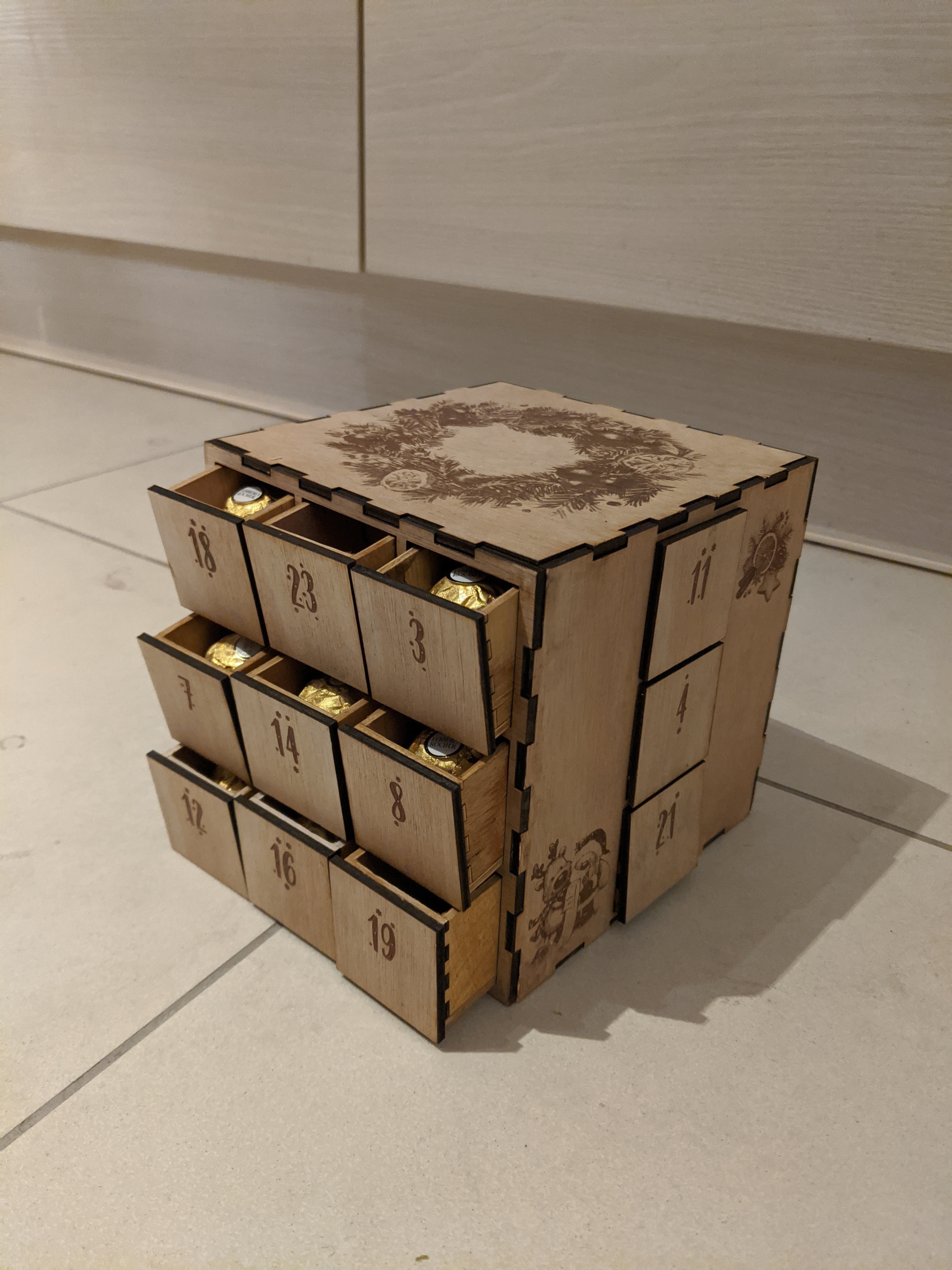
Christmas is coming and with it its collection of advent calendars of all kinds... but this one would give you more than others:
- reusable (you could keep it for years)
- zero-waste (yes Christmas can be eco-friendly too!)
- you choose what you want (finally you can have advent calendar with good quality sweets without exploding your budget!)
- wooden style (that looks more traditional, isn't it?)
- self-made (how to enjoy more an advent calendar's sweet than from a self-made one?)
So if you'd like to have yours, this Instructable is for you!
(Note: of course you could use other methods to do this but I used laser cutting for faster and better results and that's what I'll talk about in this course)
Supplies
- 3mm plywood, MDF or equivalent (here I used plywood)
- laser cutter
- wood glue
- wood stain (optional)
Designing
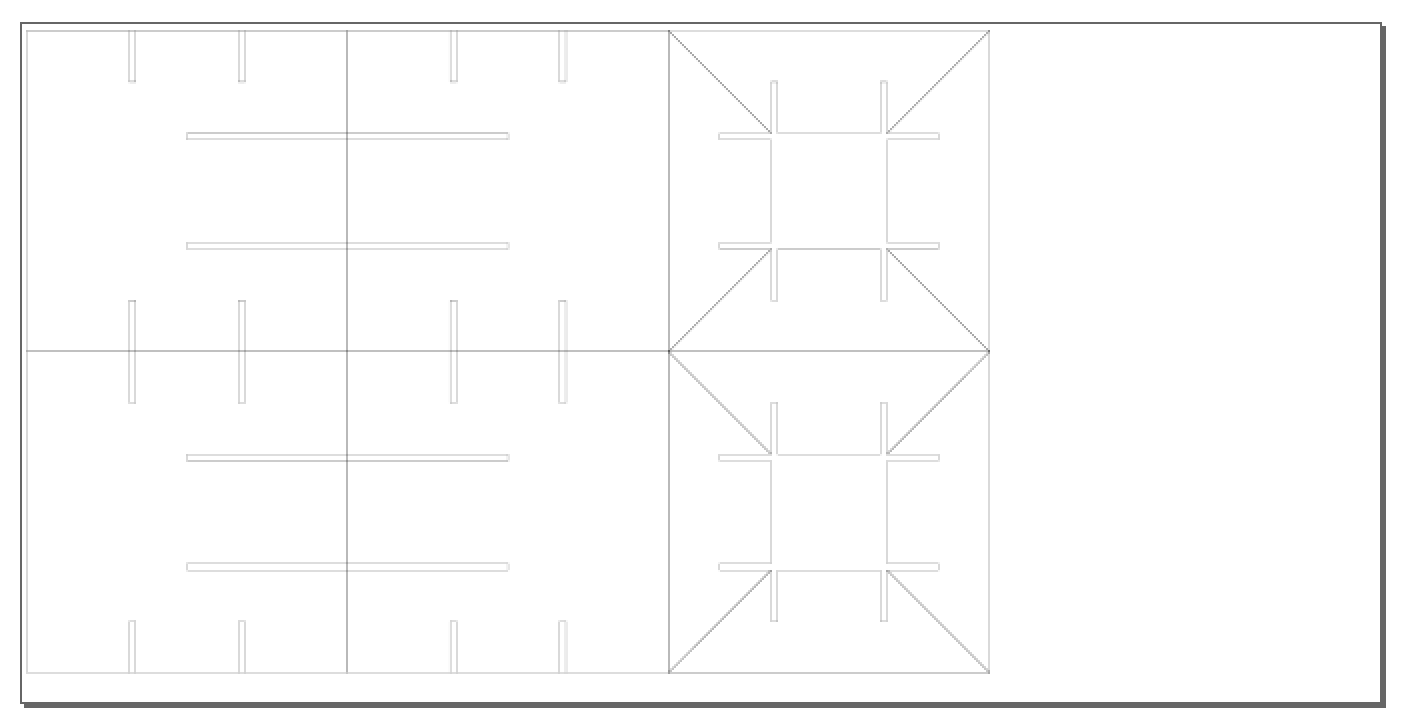
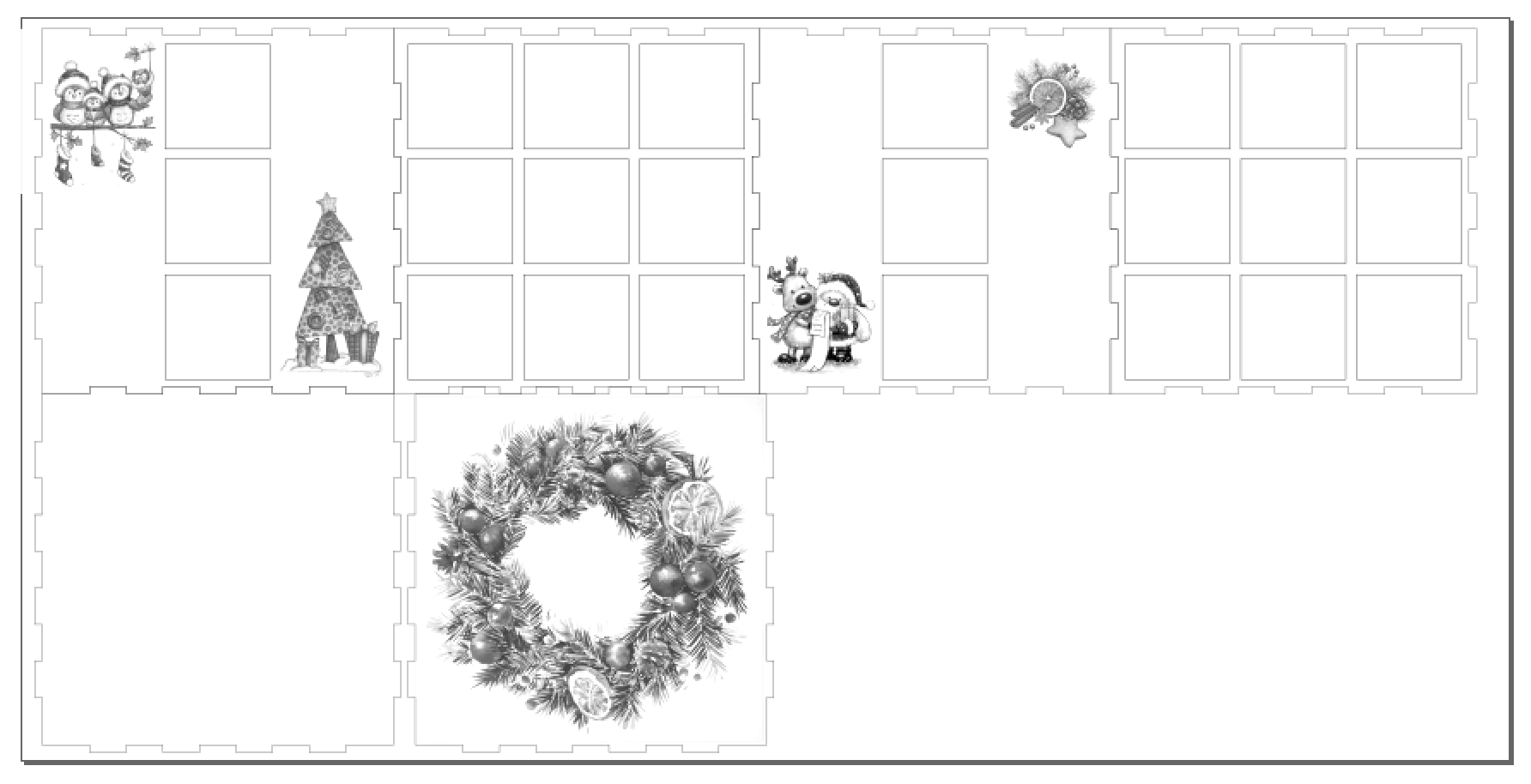

Dimensions
I went for a 150x150x150mm cube with 40x40x40mm drawers.
SVG files
The design has been made with Inkscape (free vector software).
I created 3 files:
- Internal structure (CubeDeL'AventInterne.svg)
- External structure (CubeDeL'AventExterne2.svg)
- Drawers (CubeDeL'AventTiroirs2.svg)
/!\ You have to pay attention to two things if using those files:
- it's designed for 3mm thickness
- before sending it to your laser cutter, you may need to change the stroke thickness for cutting
(Note: the drawers file may vary from the pictures because I've improved it. Pictures are from the 1st version which had minor mistakes...)
Laser Cutting

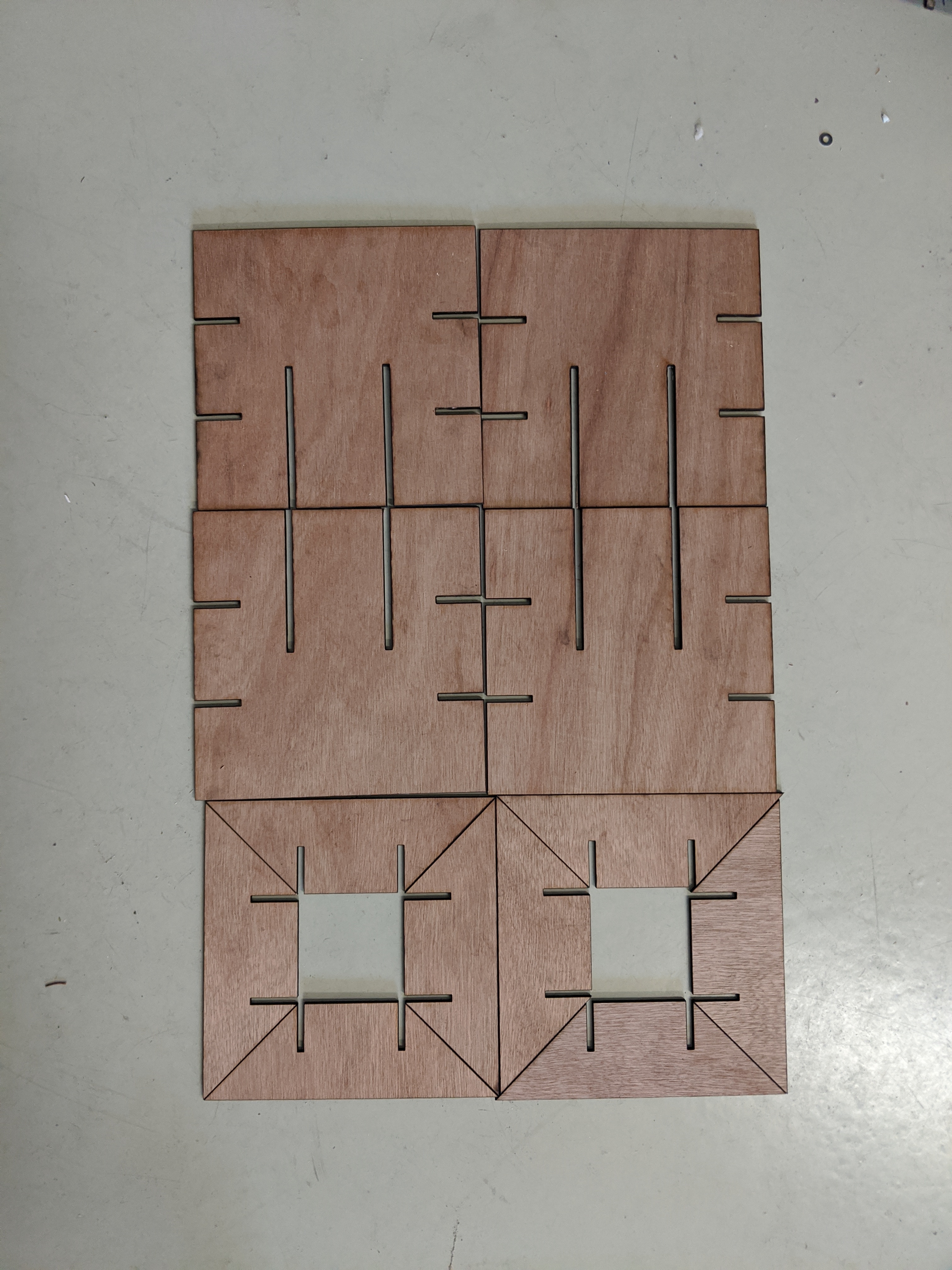
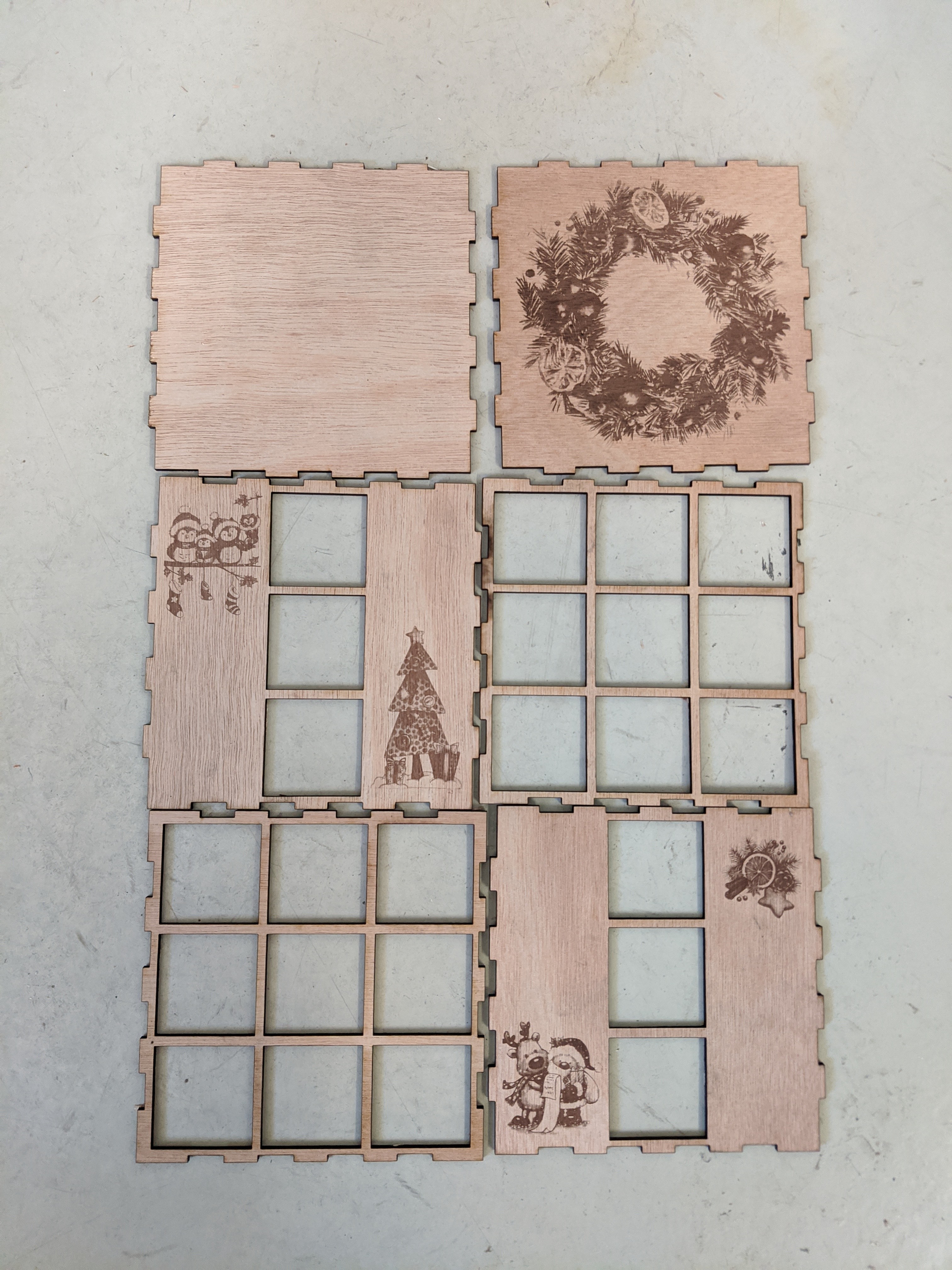.jpg)
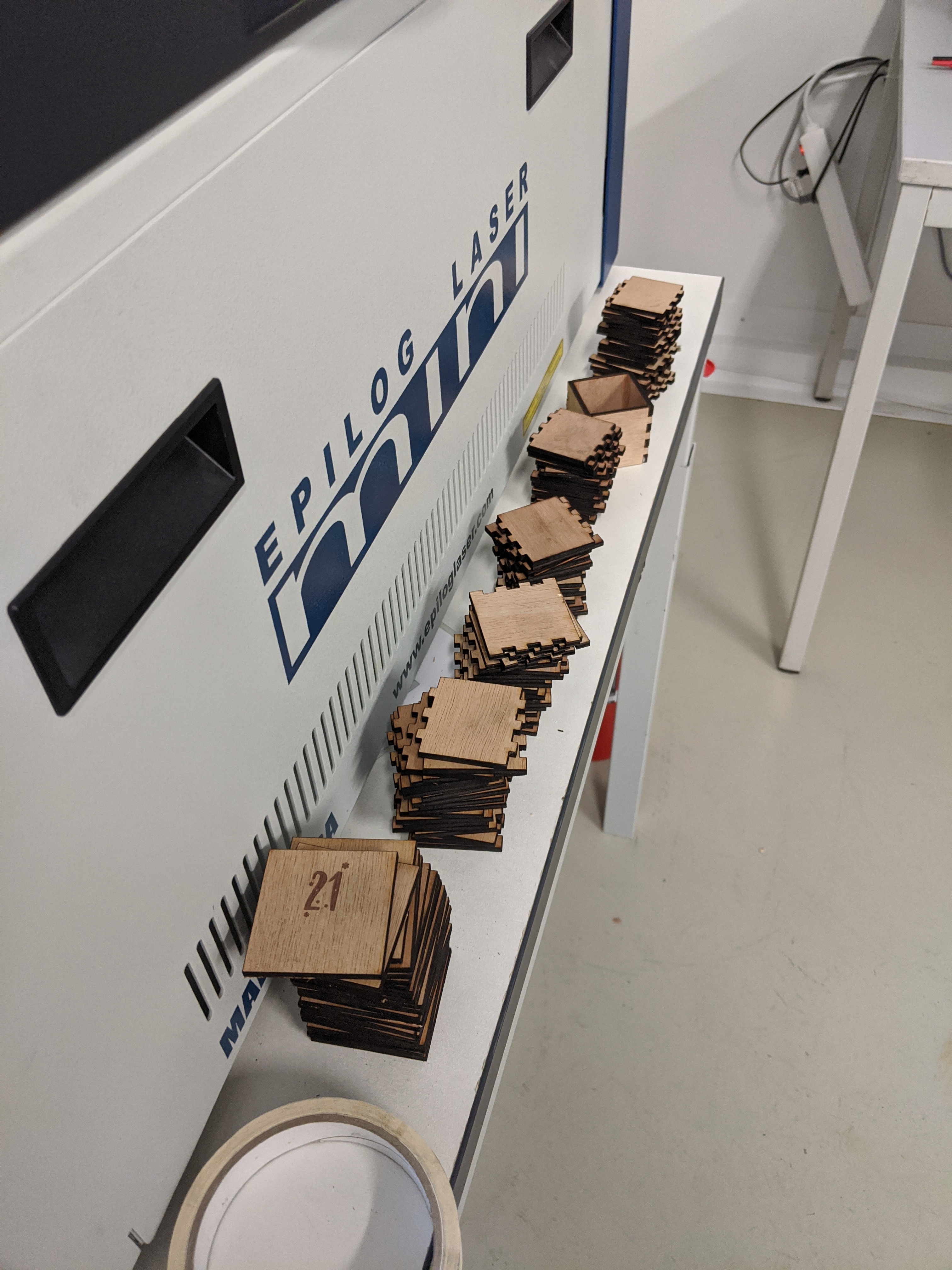
Files editing
Edit the files to have the correct settings with your laser cutter.
Here's what I used (with an Epilog Laser Mini):
- Vector:
- No Fill
- Stroke = 0.03mm
- Raster:
- Fill : Black
- No Stroke
Laser settings
Then you have to adjust the laser settings for good results.
Here I strongly suggest you to make some tests on some scrap wood before you go with the full file. Otherwise if something goes wrong, like not cutting enough or rastering too deeply, you may end up with wasting a whole board...
Here's what I used (with an Epilog Laser Mini):
- Vector:
- Speed = 25%
- Power = 100%
- Raster:
- Speed = 50%
- Power = 50%
Assembling

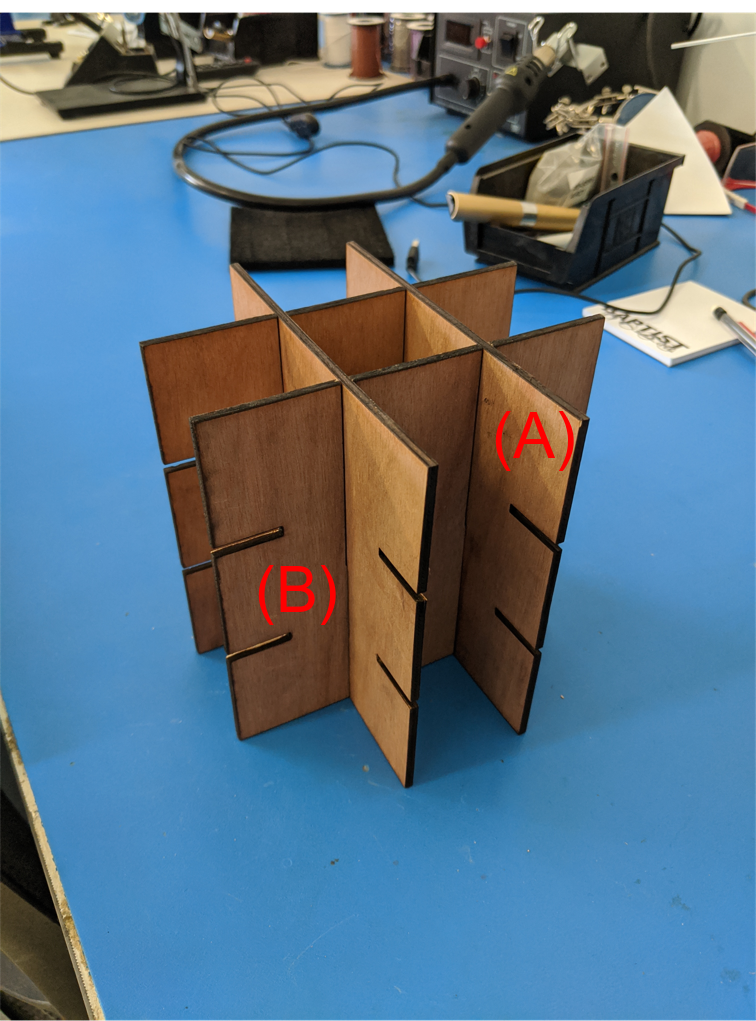
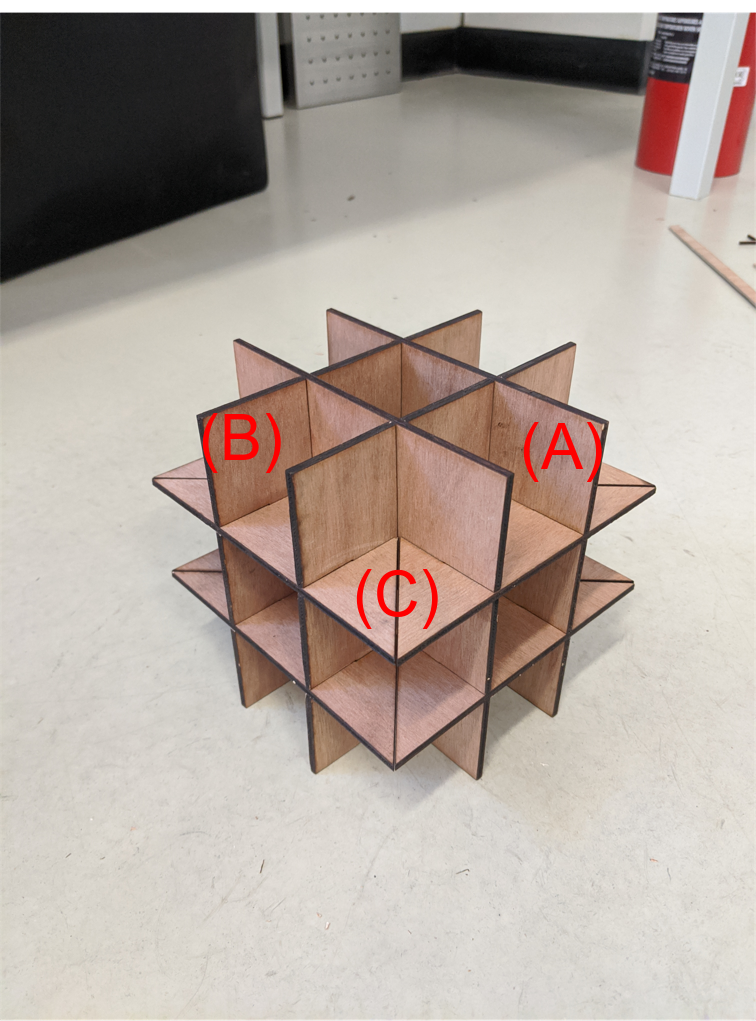
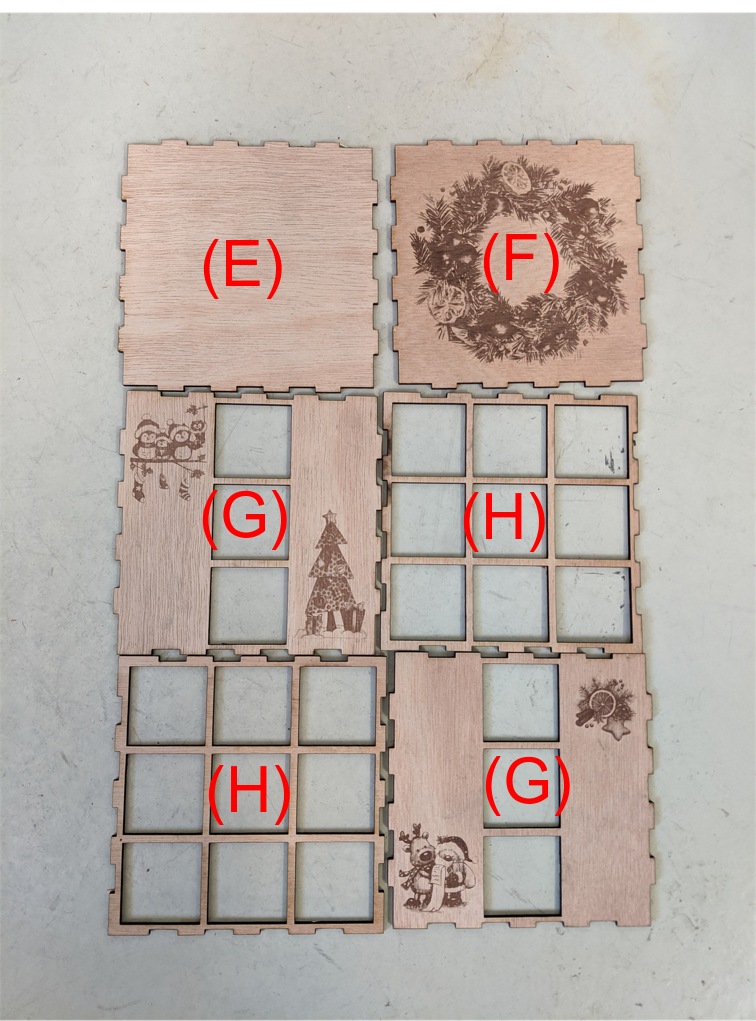
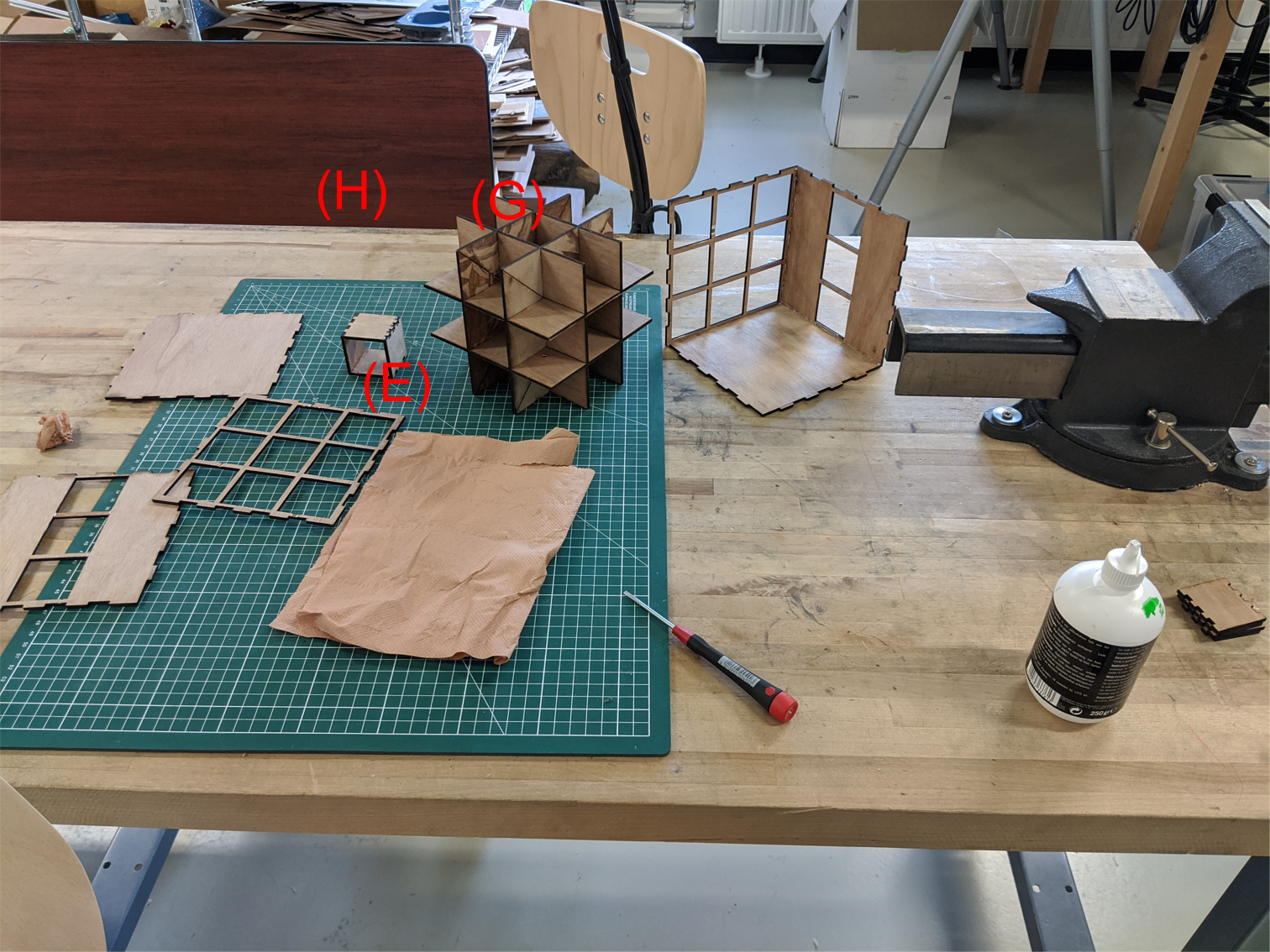
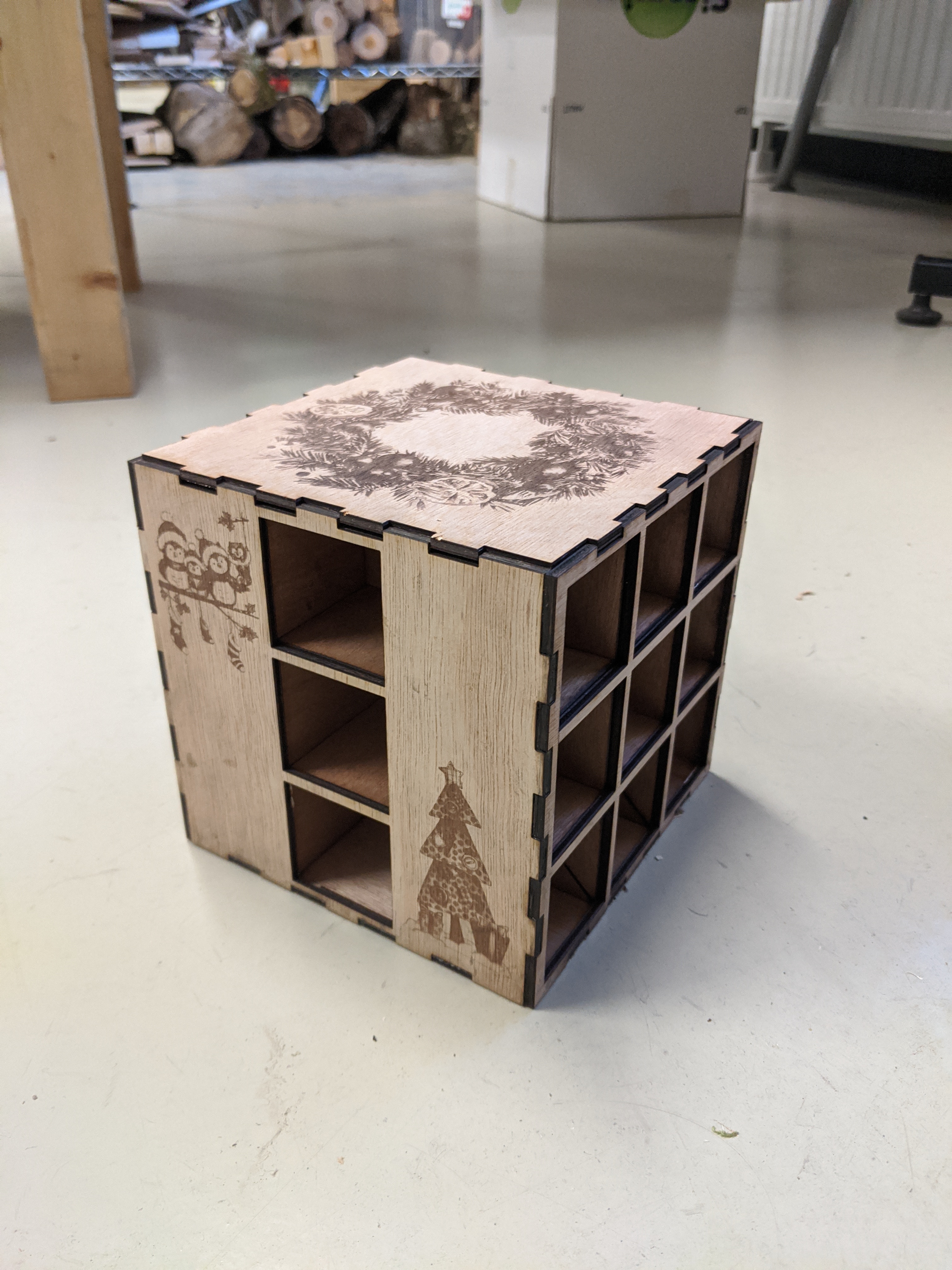
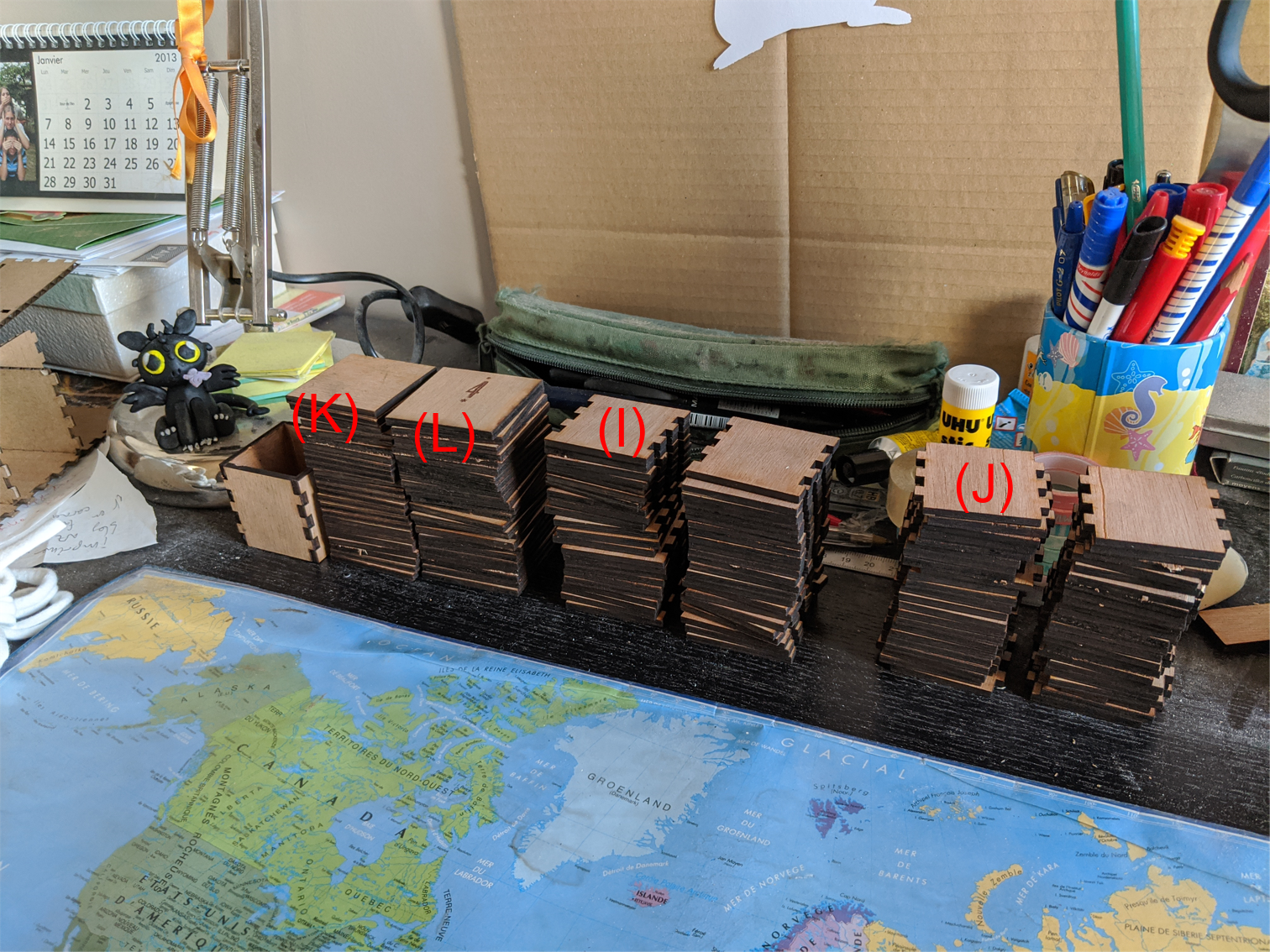
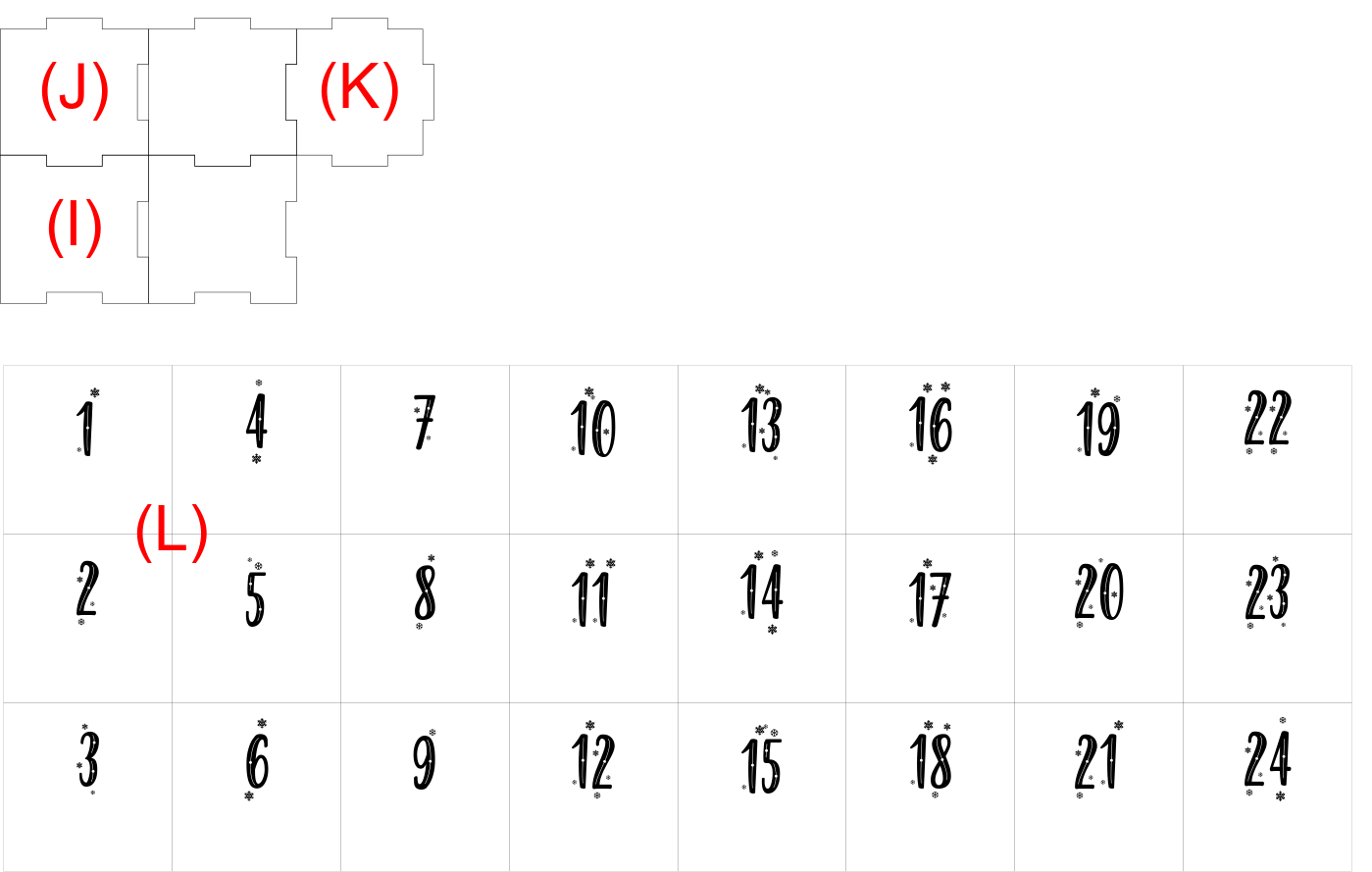
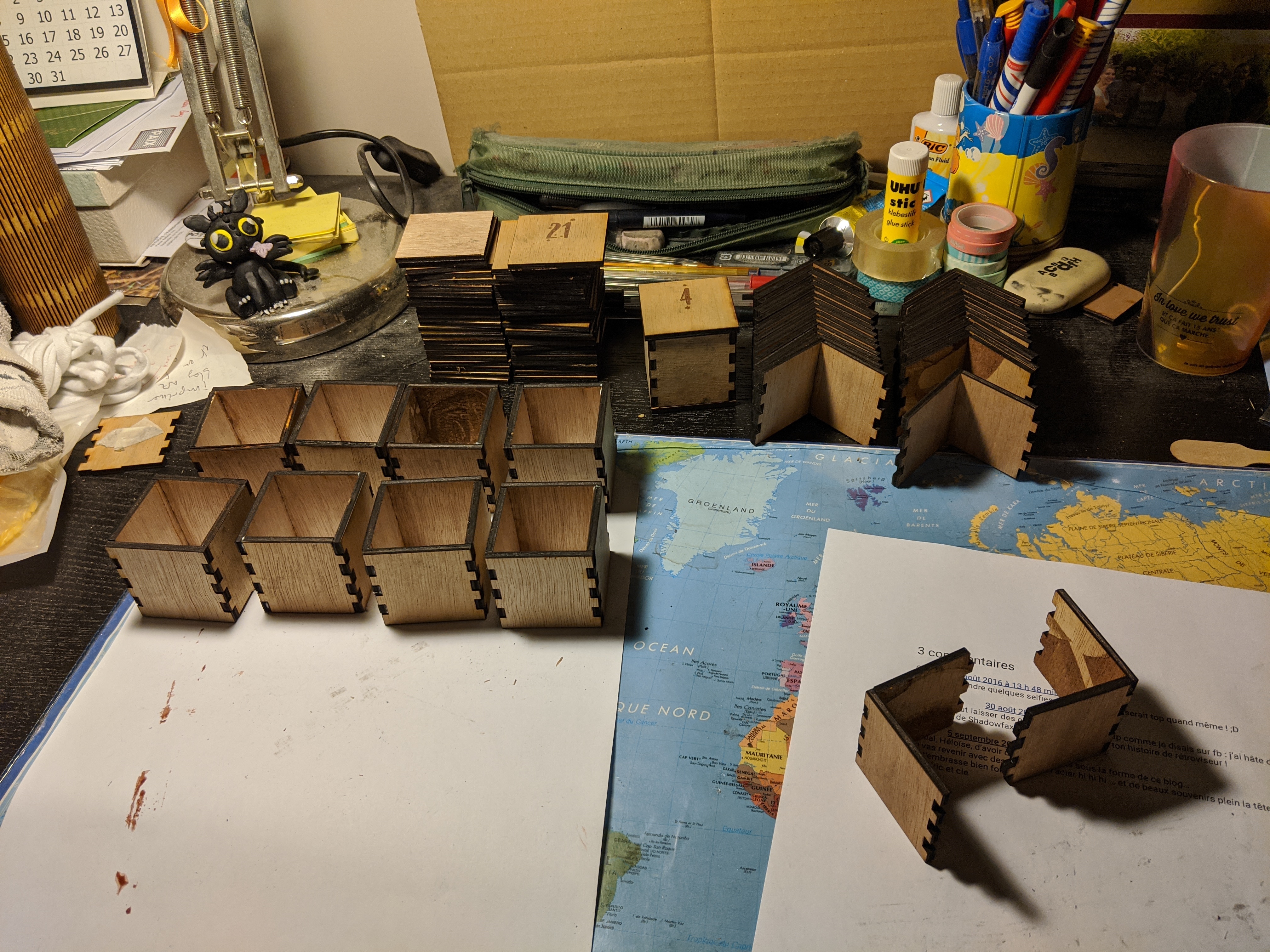
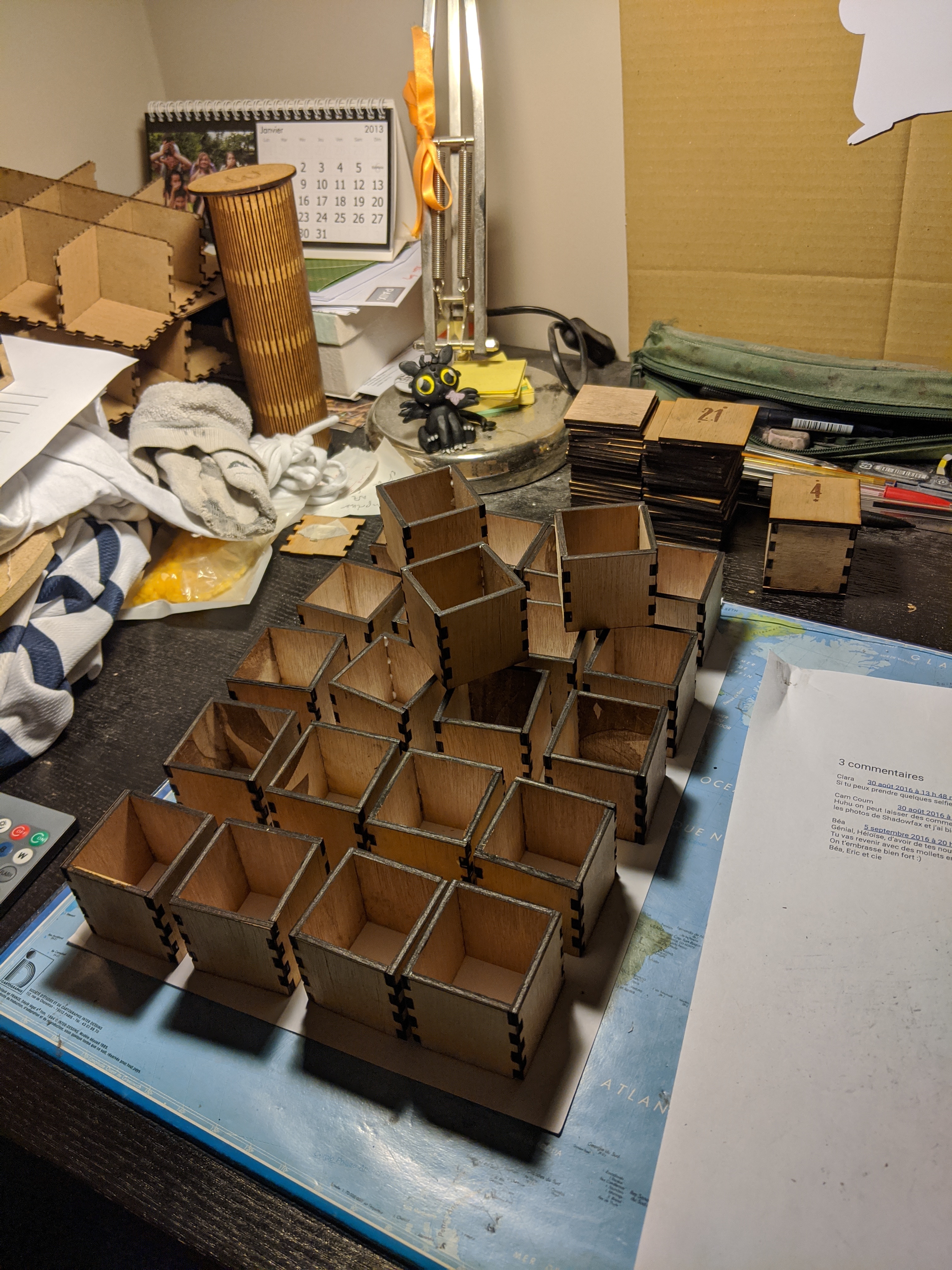
That's the funniest part!
Here you get to take out all your freshly cut wooden parts and assemble them together!
1) The internal structure
It is made of 12 pieces:
- 2x 144x144mm with mid-cuts pointing downwards (A)
- 2x 144x144mm with mid-cuts pointing upwards (B)
- 8x 144x46mm (C)
First you assemble the (A) parts with the (B) parts.
Then you insert the (C) parts on all sides.
Note: Here you don't need to use glue because the cuts should fit perfectly and hold together quite well. Also because this internal structure will be trapped inside the external one it won't be able to move anyway.
2) The external structure
It is made of 6 pieces:
- 1x bottom (E)
- 1x top (F)
- 2x sides with 3 holes (G)
- 2x sides with 9 holes (H)
Here you have to use wood glue to assemble the parts and fix them together.
There is no proper method to go for it but here's what I suggest: start from the bottom (E) and glue it with a 3-hole side (G). Then next to it glue the 9-hole side (H). Keep alternating so you follow the pattern G-H-G-H for the 4 sides.
Don't glue the top (F) now! First we have to insert the internal structure inside... ;)
3) Internal + external structure
Now you take your internal structure and you insert inside your external structure which should look like an open cube. There's no right direction for the internal structure although you may want to have the "empty column" vertically (this may prevent drawers to go too far away although they should have a blocker that will prevent that anyway...) You may struggle a bit to enter it fully because it's a tight fit. If needed you can sand a little bit the sides of the internal structure to help.
Finally when this is done you can finish the external structure by adding the top (F) and closing the cube. Personally I didn't glue the top so I'm able to remove the internal structure back again. That's only personal preferences here ;)
4) Drawers
(here the pictures will differ a bit from the file design because that's the first test version which had some mistakes)
It is made of 6 pieces:
- 2x sides with 2 fingers (I)
- 2x sides with 1 finger (J)
- 1x bottom (K)
- 1x front (L)
Again no perfect method here...
I suggest first to glue together (I) + (J) sides, twice. Then glue those 2x2 pieces together and you end up with a 4-side cube open on top/bottom. Then glue the bottom (K) to this part. Finally add the front (L) part on whatever side you prefer. Do not center it but rather align it with the bottom (you can leave 1-2mm from the bottom). Also make sure not to put the number downwards. You want to have the open side at the top, that's where you'll put your sweets!
Finitions (optional)
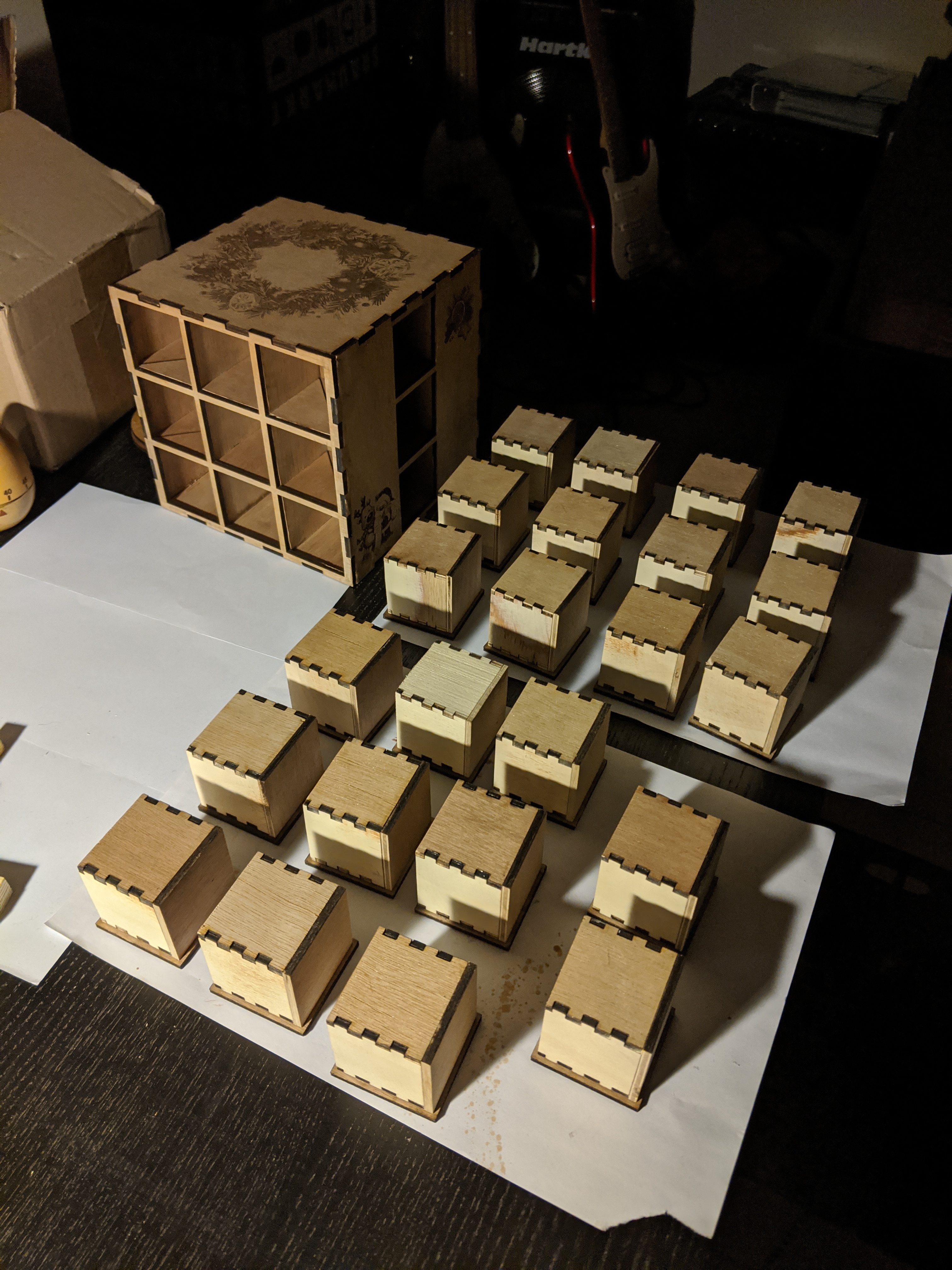
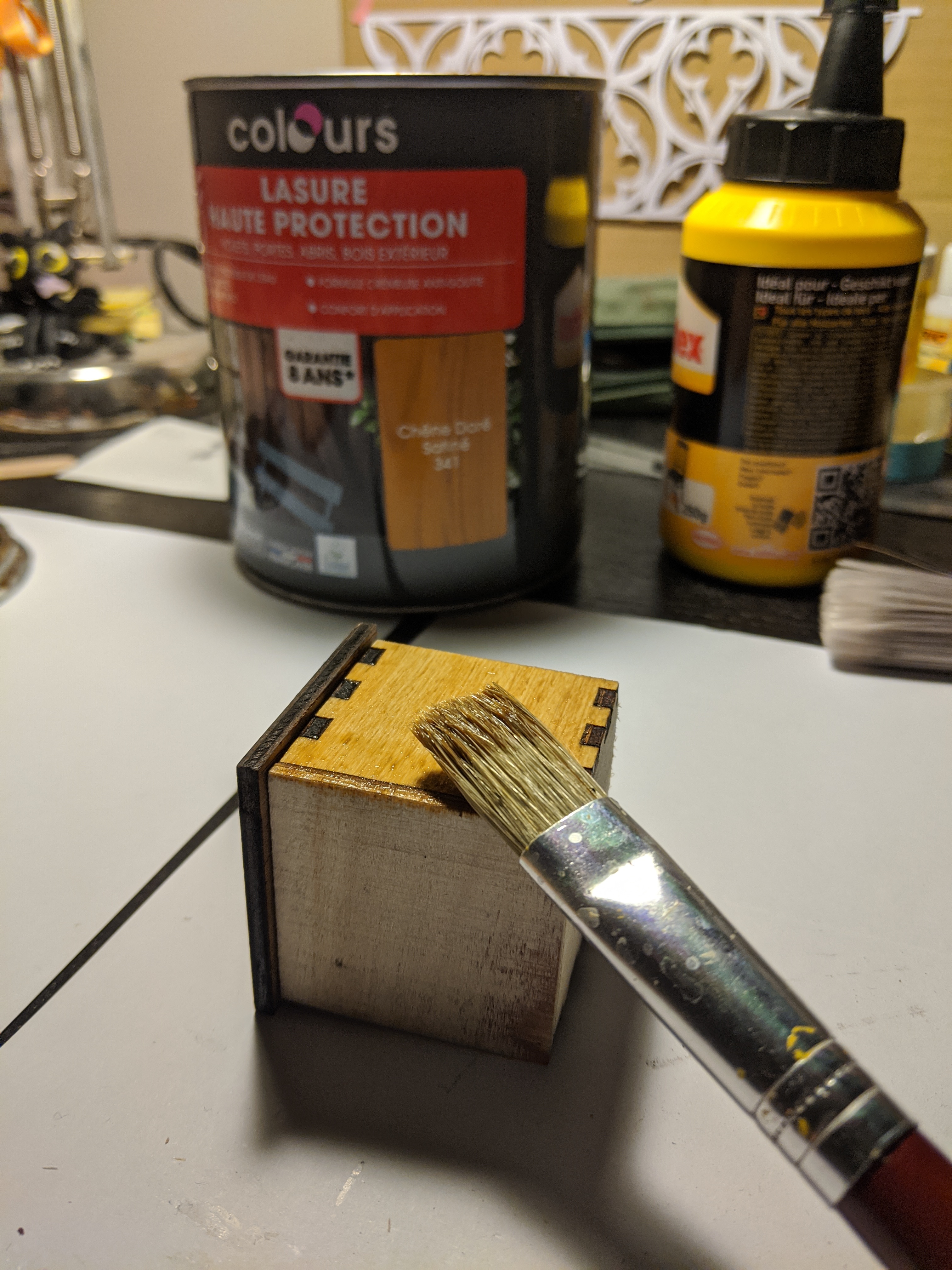
You could say you're ready to go and that's fine! But because I made some mistakes I had to do some finitions in order to get a nice finish, so I'll explain you what I've done ;)
First I sanded all sides of the drawers except the front one (with the number).
Note: I prefer not to sand the parts which have been rastered by the laser, that doesn't give good results. Always better to sand before rastering, but here that wasn't necessary.
Then I apply a layer of wood stain to protect the wood and give a nice and warm color.
Note: the wood stain doesn't need to be food safe as it's only applied to the external sides, not inside the drawer where the sweets will be.
Put Everything Together!
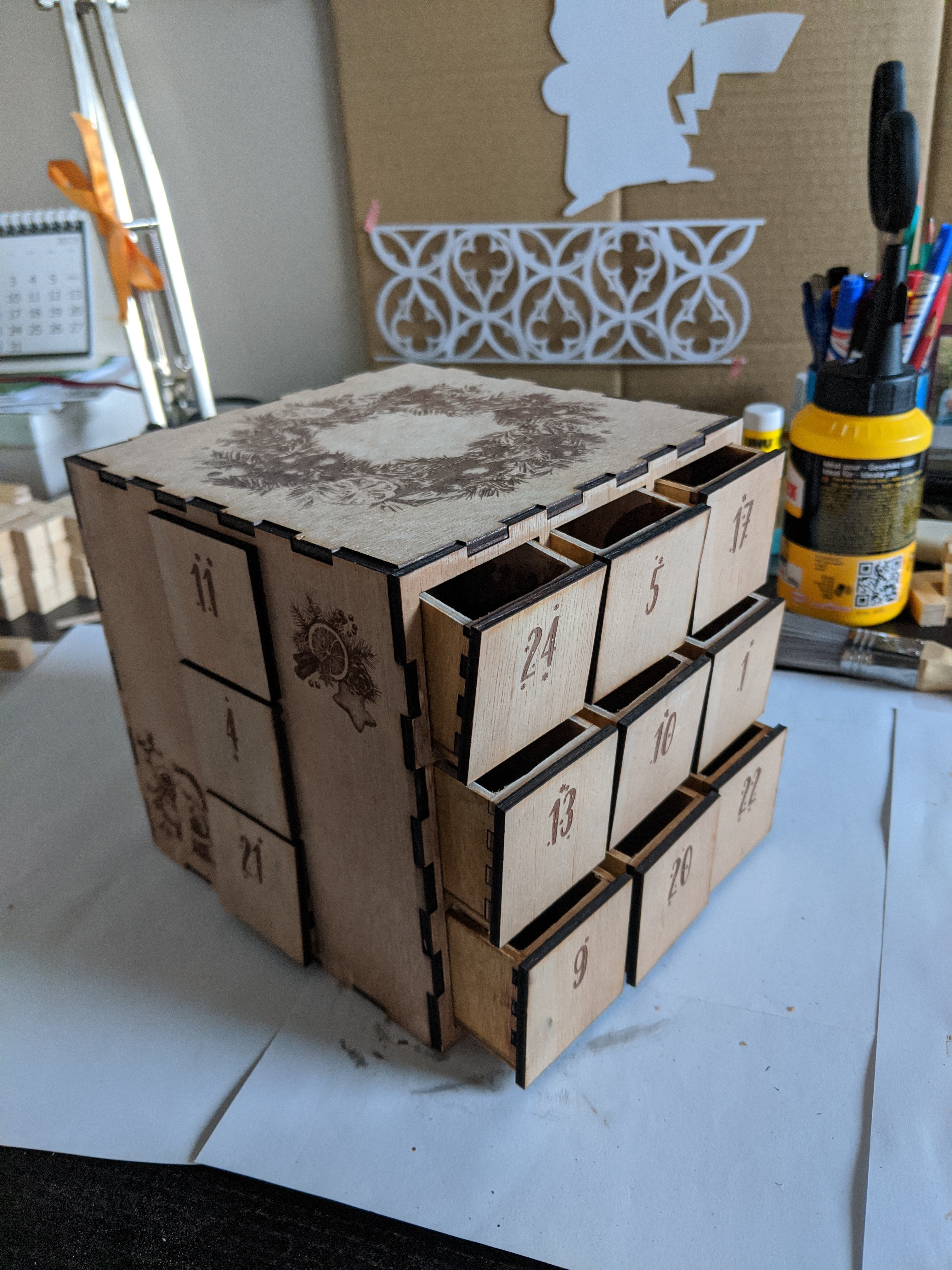
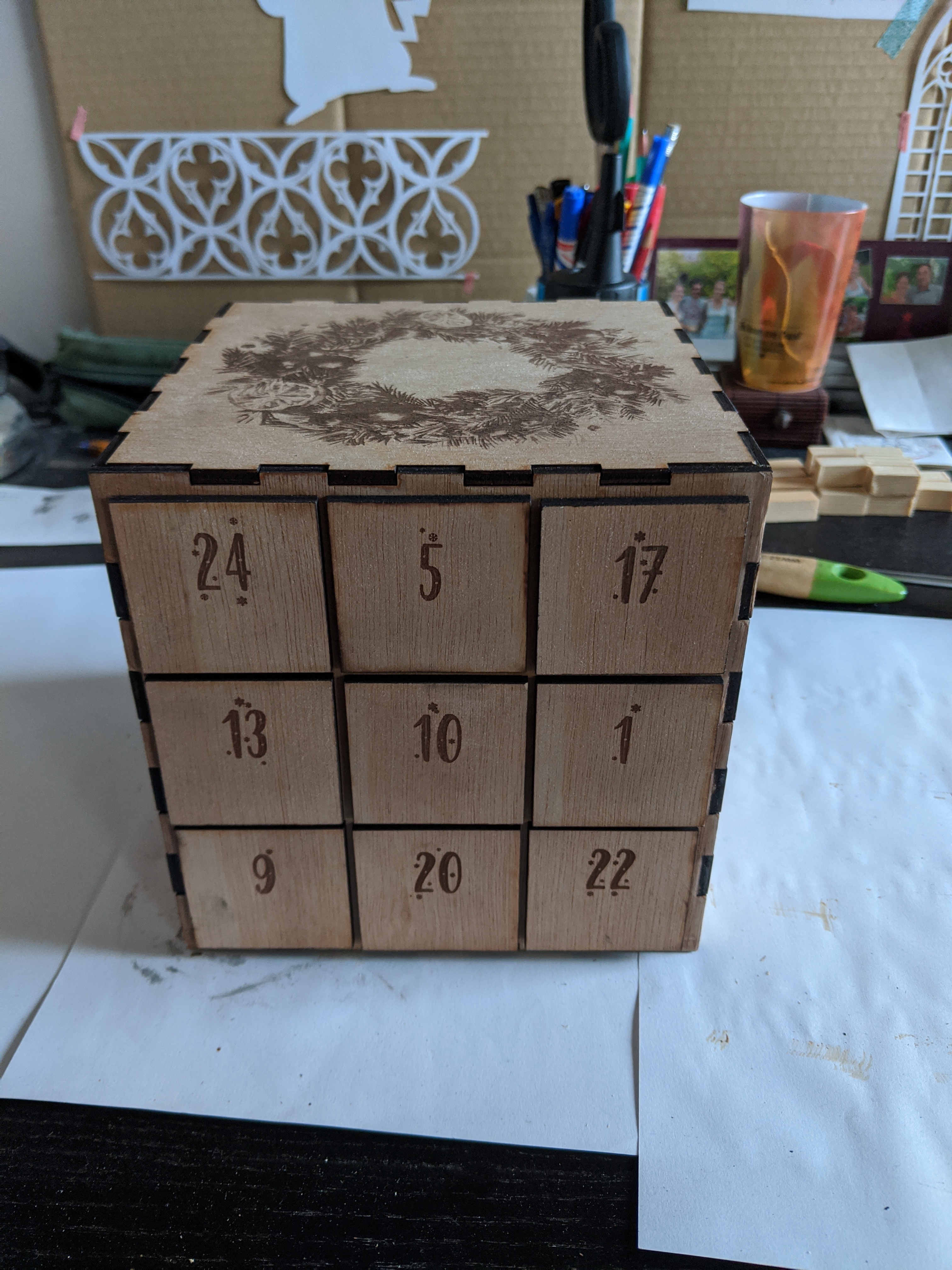
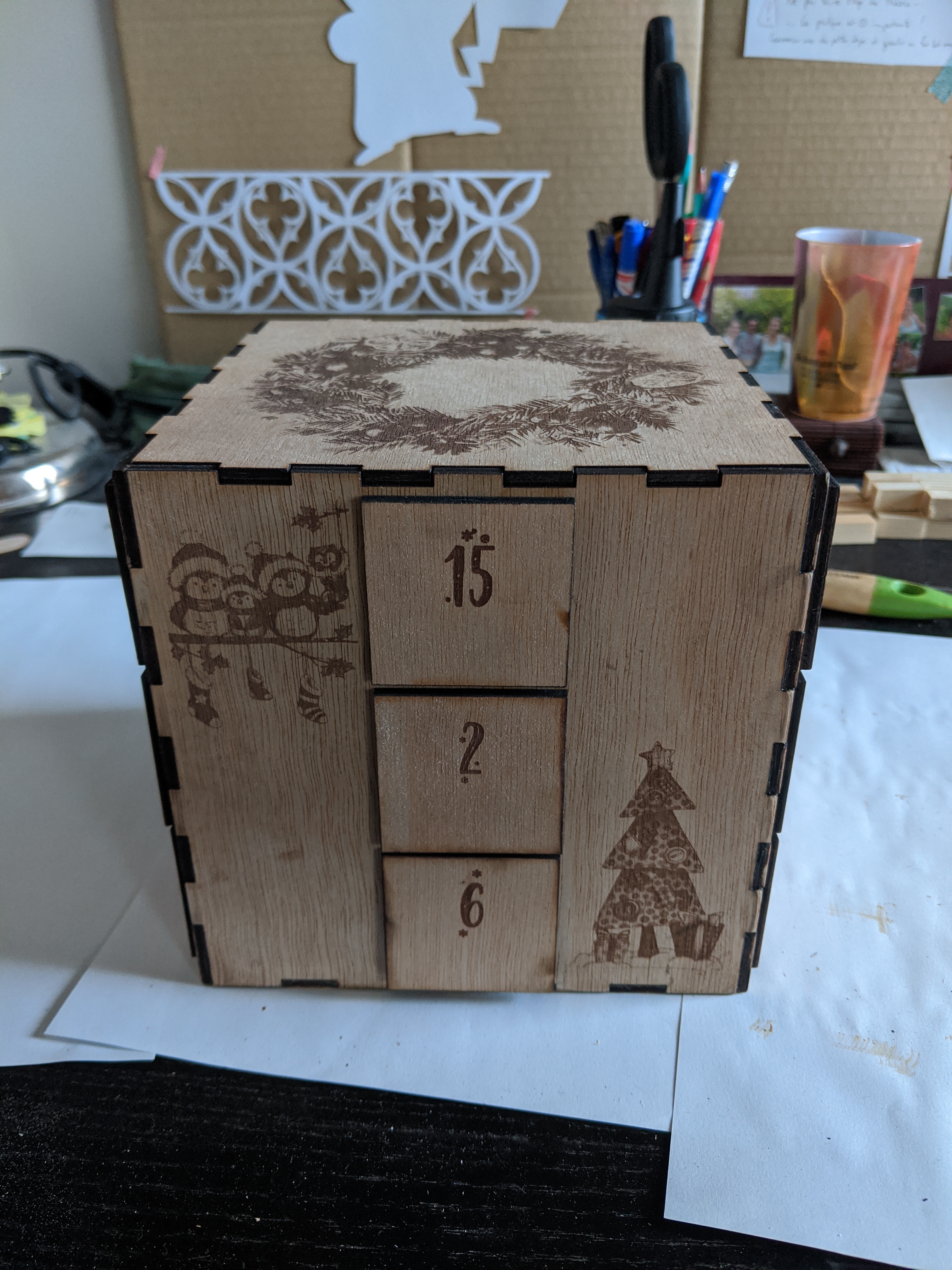
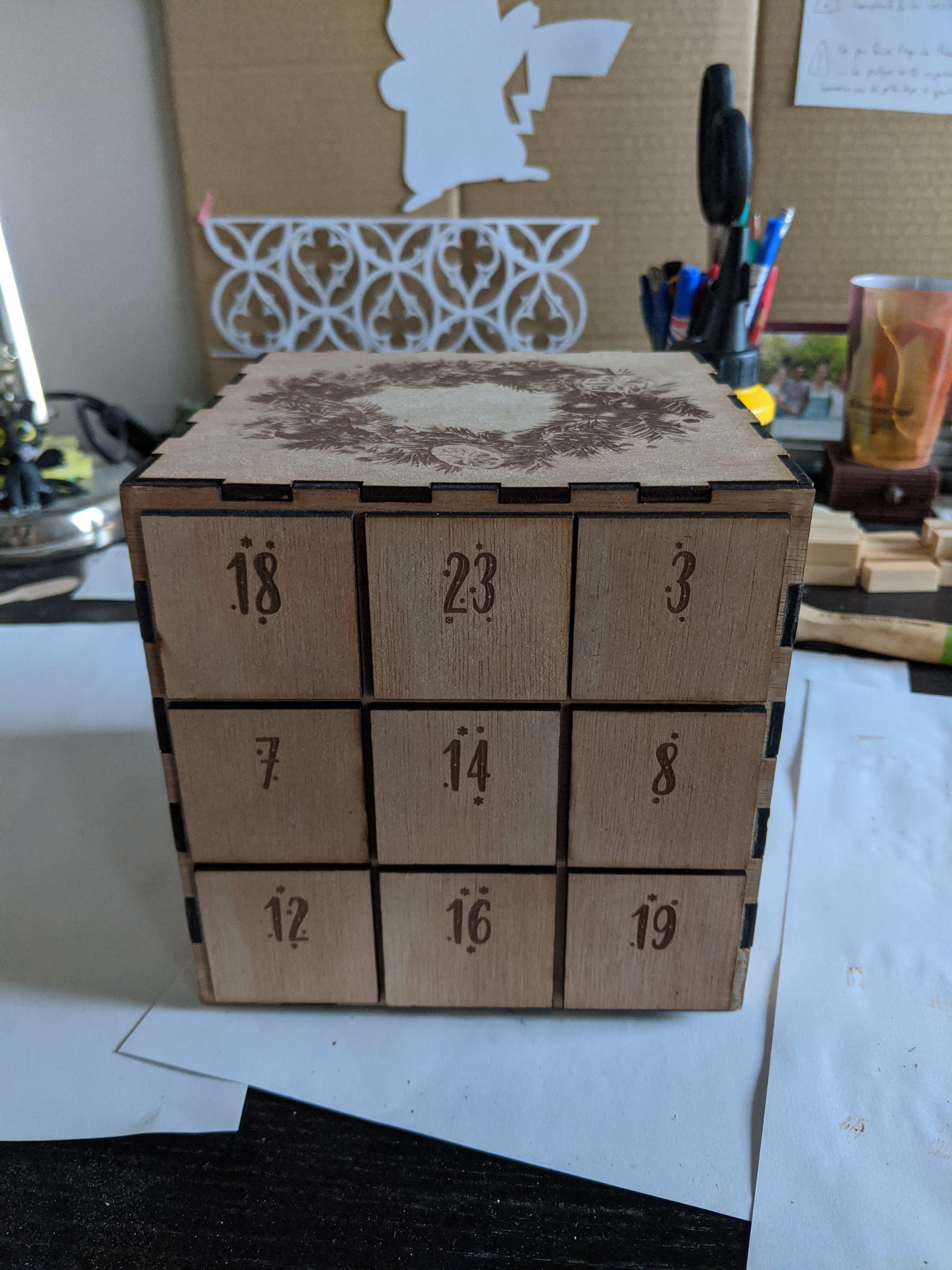
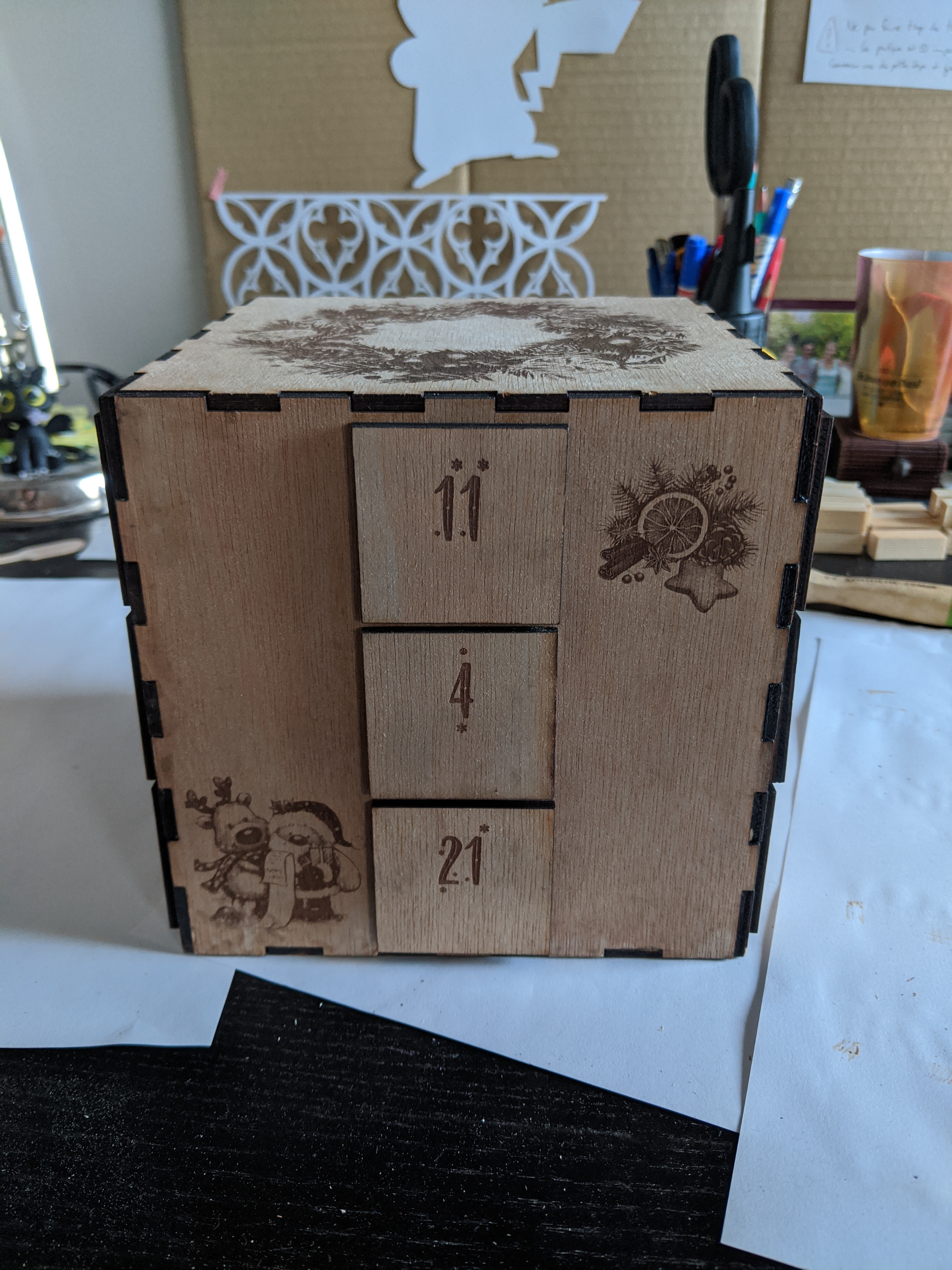
You're done!
Now you can randomly insert all the drawers inside the cube holes, put sweets inside and enjoy it every Advent day :D